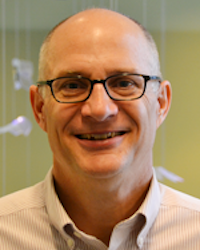Article
Active Drug-Use Counseling Improves ART Adherence in HIV Patients
Author(s):
Flexible, individualized counseling for HIV patients who also use injection drugs also resulted in improved viral suppression.

William Miller, MD, PhD, MPH
Culturally engrained stigmas can cause HIV-positive injection-drug users to feel ostracized by the traditional health care system and often serve as obstacles to proper care, leaving this high-risk population in an extremely vulnerable state in terms of preventing or managing HIV.
William Miller, MD, PhD, MPH, an epidemiology professor at Ohio State University, noted that people who inject drugs are stigmatized in both general population and in health care settings, leading to their fear of engagement with care providers or others who may want to help them.
“This becomes even more of a challenge when it comes to people who inject drugs and who have HIV,” Miller said in a statement.
According to the US Centers for Disease Control and Prevention (CDC), 1 in 10 new HIV diagnoses in the US are caused by injection drug use or male-to-male sexual contact coupled with injection drug use.
Having witnessed the dire need for effective and assessable forms of prevention and treatment among this vulnerable population, as well as the limited efficacy of antiretroviral medications, Miller and his team launched a study on intervention methods among high-risk populations in the Ukraine, Vietnam, and Indonesia.
“Our goal was to design something that could be scaled up relatively easily, including in places that don’t have a lot of resources,” Miller said.
Counseling proved integral to effective management and prevention of HIV among this population of injection-drug users.
The study determined that flexible counseling and assistance navigating available resources, coupled with antiretroviral medications, were the most effective means of reducing the spread of HIV while also reducing the rate of deaths from HIV infection.
According to the investigators, the efficacy of treatment was correlated to the personalization of care—the more flexible the counseling program, the more successful the outcome.
“Our study confirmed the fact that the effort to successfully engage HIV-infected people who use injection drugs in care is on a spectrum,” study co-lead author Irving Hoffman, PA, MPH, said. “Some needed very little support and some required an enormous effort with several visits and counseling sessions to help them and convince them to get into care.”
This intervention flexibility was ideal to serve to both this population and the study objective, Hoffman said.
After 1 year, 72% of the HIV-positive group who received a flexible program of psychosocial counseling and assistance navigating existing resources said they were using antiretroviral therapy (ART) to combat their HIV infection. In the control group, only 43% of infected participants were in therapy, according to a press release.
According to Miller, the increase in ART use among the HIV-positive participants was a “remarkable victory” due to the overwhelming obstacles that often stand in the way of treatment, including culturally engrained stigmas and inadequate access to proper health care.
Not only did the introduction of counseling into patients’ care increase the likelihood of use of ARTs, the study showed a significant improvement among the intervention group in terms of suppression and, in turn, reduction of transmission—no HIV-free drug-use partner was infected in the intervention group within the one-year study period, while in the control group, 7 partners were infected.
According to the study, 41% of participants who underwent psychosocial support assistance accessing resources achieved viral suppression, compared to 24% in the control group, while mortality rates decreased in the intervention group compared to the standard-of-care group. Seven percent of infected intervention participants, compared to 15% who received standard care, died during the study follow-up. Furthermore, the care program cut the risk of death in half.
The study, "A scalable, integrated intervention to engage people who inject drugs in HIV care and medication-assisted treatment," was published online in The Lancet.





